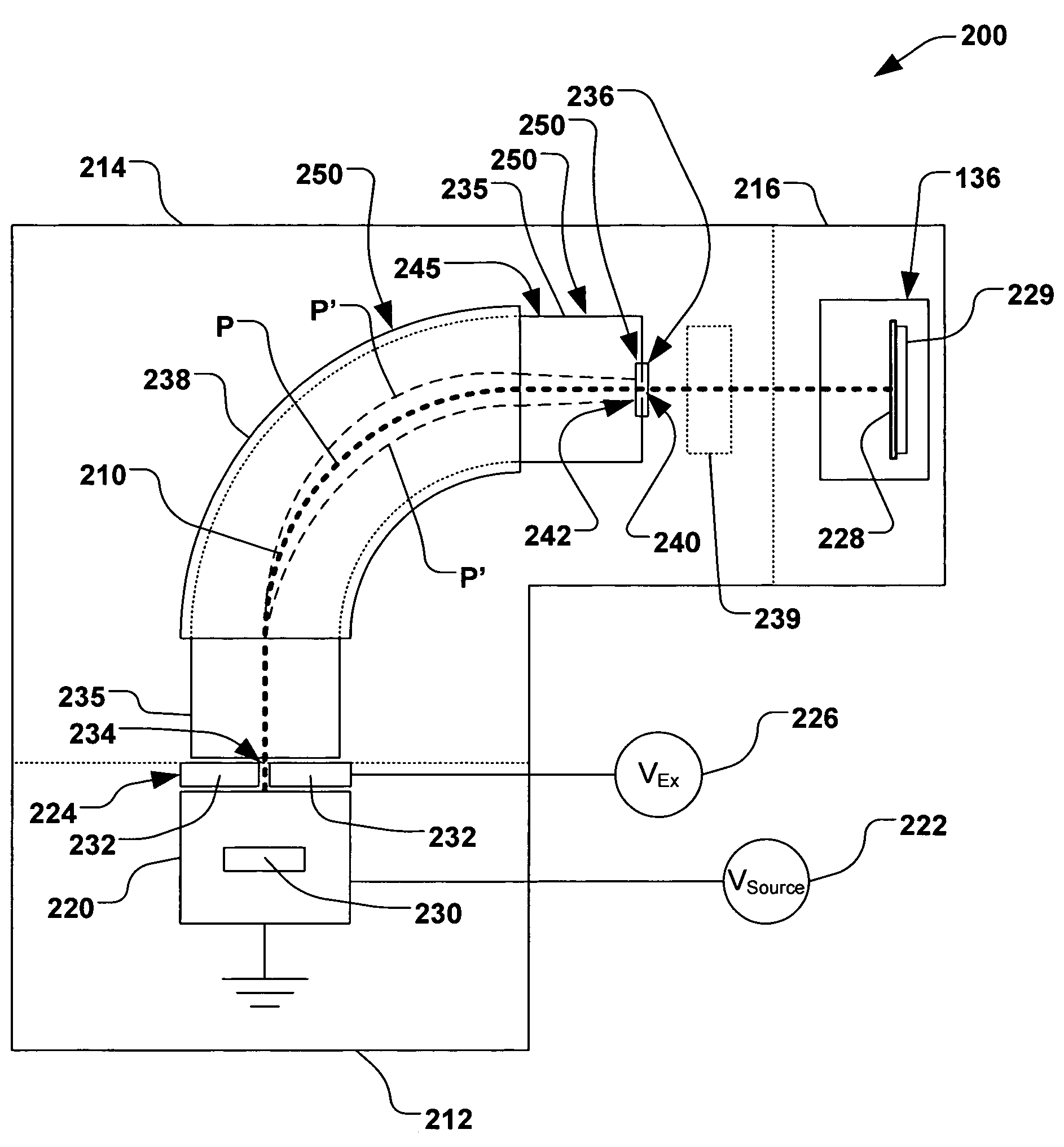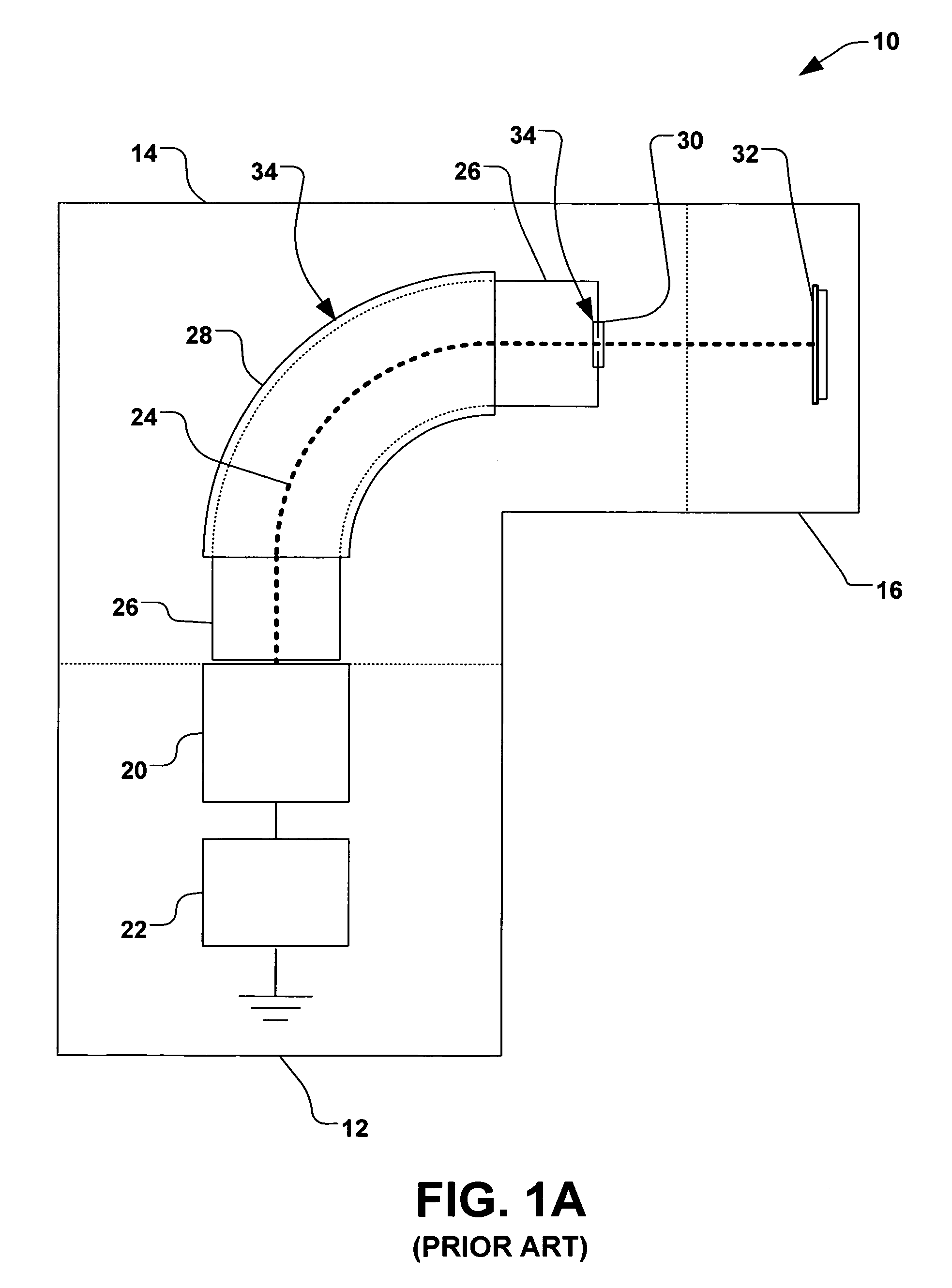In-situ cleaning of beam defining apertures in an ion implanter
a beam defining aperture and ion implantation technology, which is applied in the field of ion implantation systems, can solve the problems of reducing the efficiency and product affecting the efficiency and yield of so as to prevent contaminants from contaminating other components and limit the amount of cross-contamination within the ion implantation system
- Summary
- Abstract
- Description
- Claims
- Application Information
AI Technical Summary
Benefits of technology
Problems solved by technology
Method used
Image
Examples
Embodiment Construction
[0022]The present invention is directed generally towards a system and method for cleaning beam defining devices in an ion implantation system. More particularly, the method provides an in-situ cleaning of a beam defining aperture using an ion species that is also used for ion implantation into a workpiece. Accordingly, the present invention will now be described with reference to the drawings, wherein like reference numerals are used to refer to like elements throughout. It should be understood that the description of these aspects are merely illustrative and that they should not be taken in a limiting sense. In the following description, for purposes of explanation, numerous specific details are set forth in order to provide a thorough understanding of the present invention. It will be evident to one skilled in the art, however, that the present invention may be practiced without these specific details.
[0023]Referring now to the figures, FIG. 2 illustrates an exemplary ion implant...
PUM
 Login to View More
Login to View More Abstract
Description
Claims
Application Information
 Login to View More
Login to View More - R&D
- Intellectual Property
- Life Sciences
- Materials
- Tech Scout
- Unparalleled Data Quality
- Higher Quality Content
- 60% Fewer Hallucinations
Browse by: Latest US Patents, China's latest patents, Technical Efficacy Thesaurus, Application Domain, Technology Topic, Popular Technical Reports.
© 2025 PatSnap. All rights reserved.Legal|Privacy policy|Modern Slavery Act Transparency Statement|Sitemap|About US| Contact US: help@patsnap.com



